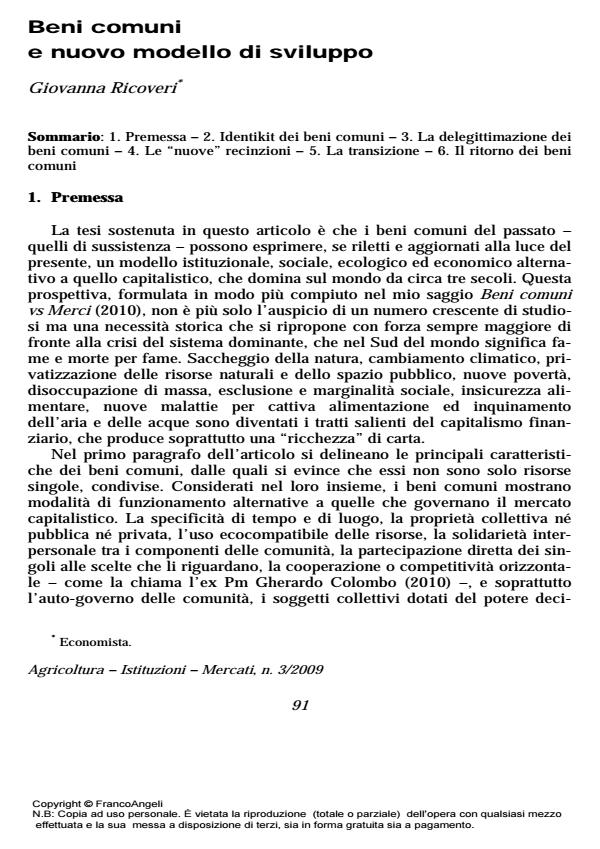Commons and New Development Model
Journal title AGRICOLTURA ISTITUZIONI MERCATI
Author/s Giovanna Ricoveri
Publishing Year 2011 Issue 2009/3
Language Italian Pages 16 P. 91-106 File size 70 KB
DOI 10.3280/AIM2009-003005
DOI is like a bar code for intellectual property: to have more infomation
click here
Below, you can see the article first page
If you want to buy this article in PDF format, you can do it, following the instructions to buy download credits

FrancoAngeli is member of Publishers International Linking Association, Inc (PILA), a not-for-profit association which run the CrossRef service enabling links to and from online scholarly content.
In this article I formulate the proposal that the commons - updated to the present - may become the backbone of a social order alternative to the capitalist order, which has dominated the world for the last three centuries. I hold that the "return of the commons", as I call my proposal, is an historical necessity to overcome the crisis of capitalism and the problems it has created, especially in its last financial phase: plunder of nature, privatisation of the public space, unemployment, social inequalities, ecological catastrophes. To support my proposal I first identify the main features of commons such as self-government by local communities. Second: I recall briefly how the commons were de-legitimated by the Industrial Revolution in the passage from Medieval times to Modernity. Third: I highlight the new recent enclosures of water, air, land and energy such as climate change. Fourth: I hold that the return of the commons requires an intermediate step, i.e. the ecological conversion of economies to be carried out by local communities. Fifth: I speculate on the reasons that haven’t yet allowed to the return of the commons to become the first item on the agenda of the movements.
Keywords: Commons, New Enclosures, Local Communities
Giovanna Ricoveri, Beni comuni e nuovo modello di sviluppo in "AGRICOLTURA ISTITUZIONI MERCATI " 3/2009, pp 91-106, DOI: 10.3280/AIM2009-003005